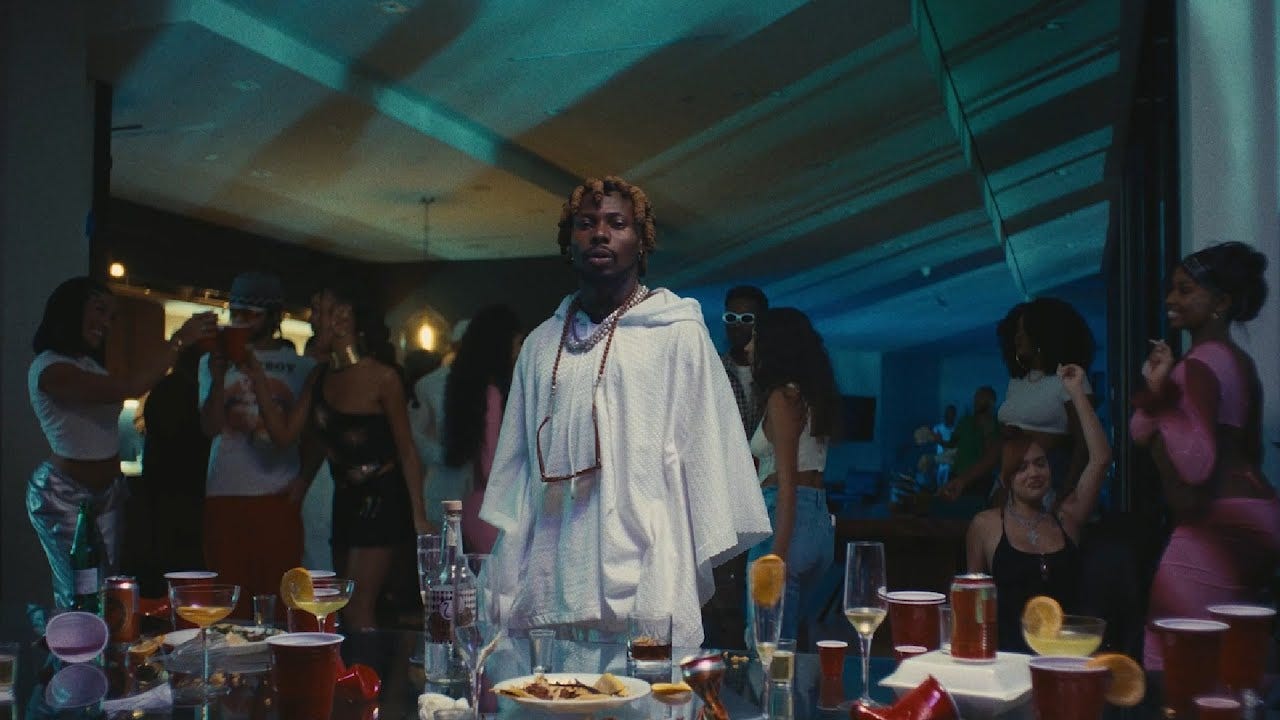21. IS ASAKE LONELY AT THE TOP?
Work of Art is a sure-footed sequel, with the tracklist turned over its head with good effect.
Time flies, and it’s now been two years since Asake released Work of Art. His second album already occupies a distinct spot in his growing discography as his most cohesive work, one that rewards listeners with a wholesome experience from start to finish. Also, Lonely at the Top, one of the album’s singles, has become his biggest tune so far. This commentary was written shortly after the album was released, but holds up my most salient thoughts about this album, my favourite of his albums so far. What is your favourite Asake album?
Last weekend, I watched Asake prance at the O2 Arena live on YouTube and was overwhelmed with joy. I have always been a fan of this guy since the first time I heard his debut EP. Yes, he went to Ife, but this is just the half of it.
Asake is the fastest-rising Afrobeats musician so far. He released two solid albums in less than two years and sold out the 20,000-capacity 02 Arena. Also, he has altered Afrobeats' soundscape with his background choral technique and his melodious infusion of Amapiano.
It must have been tricky releasing his second album less than one year after Mr. Money with the Vibe, but that risk paid off. Work of Art is a sure-footed sequel, with the tracklist turned over its head with good effect. An album that could originally begin with the final song, Yoga, is immaculately rearranged like his debut album.
Mr. Money was triumphant with a celebratory drive; Asake only needed to stitch a cache of hits. Work of Art brings a different energy and flair to a winning formula. Asake is more confident in his craft and seems more vulnerable and adventurous.
Intricately woven into this project are his working-class upbringing and his dysphoria around the two-edged sword of success and fame. It is a story we know too well, a popular trope in Afrobeats, but Asake built something beyond perfunctory thanksgiving. It is moving, effervescent without being effusive; more importantly, it is uplifting about humanity in the way serviceable art tends to be.
Asake’s genius is the joyous way he manipulates language around his hooks. It could be mighty expansive (Remember), mild & contemplative (2:30), rueful (Lonely at the Top), but always incurably melodious.
I struggle to pick a favourite song. Asake’s flow on Basquiat lives rent-free in my head. What makes it sublime besides the sick wordplay is the effortless code-switching. Strike that - English, Yoruba, Pidgin and accoutrements of contemporaneous street slang exist as a whole new lingua!
Still from Lonely at the Top Music Video courtesy YouTube
The true gem of this album is 2:30. It is the kind of tune the second set DJ opens with at 2:25 a.m. in any Afrobeats-loving nightclub in Douala, Acacia Avenue, Westlands, Ligali Ayorinde, VBO Enfield and Wuse II. The intricate instrumentals play a contemplative tune that pays homage to the wee hours, the party lull, and the perennial reveler's risk assessment: to go home or to turn up till dawn.
Asake loves Ayinde Barrister and draws courage from him, but in Work of Art, Asake borrows beyond Fuji. Juju music steeped in the white-gown-wearing syncretic churches blends with Apala and Sakara, precursor genres to Fuji that lean into Islamic cantillations. Even British Easy Listening is not spared.
At the O2 Arena, Asake brought out Tunde Baiyewu of the Lighthouse to perform the Ocean Drive, the lodestone for his ‘Sunshine’ led me straight back into a St Moritz cigarette advert in late 90s Nigeria. Ocean Drive was released in the year of Asake’s birth, 1995—and in 1995, the earliest efforts of Afrobeats from the likes of Zakky Adzee, Junior and Pretty, and Baba Dee were already in our consciousness.
Asake’s songs on Work of Art are even, but their video interpretations have not been. His latest video, Lonely at the Top, was almost a letdown, salvaged by one shot: a rueful Asake in white looking beyond a table cluttered with food.
Is Asake truly lonely at the top? Isn’t Olamide an avuncular presence? His meteoric ascendance has been a YBNL production. Olamide, like Don Jazzy, studied the genre closely and paid his insight forward in his signees, FireBoy DML and Asake.





Before I read this, the way I could best capture my emotions towards Basquiat was by saying it felt like my brain and senses were being tickled 😀 You can imagine how thankful I am for the talented writer who took the time to create such an incredible piece! Such a worthy review of a fantastic album!!
Well done, Good Doctor!